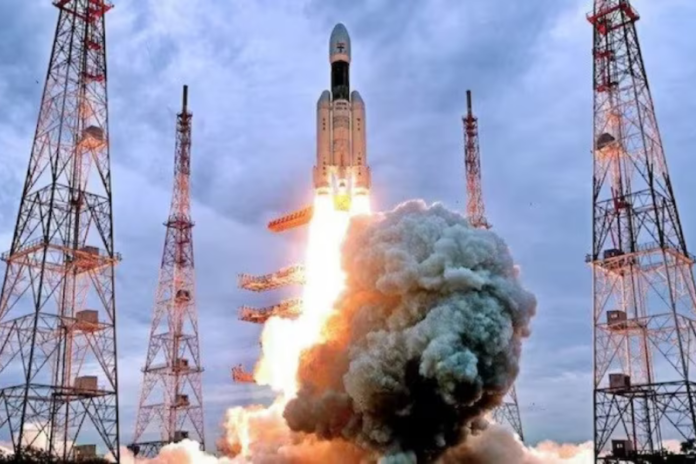India has achieved what no other nation has managed so far.
On Wednesday night, the Chandrayaan-3 from the Indian Space Research Organisation (ISRO), which included its lander Vikram and rover Pragyan, successfully executed a soft landing on the Moon.
With the success of Chandrayaan-3, India now belongs to a select group of nations —along with the United States, China, and the erstwhile Soviet Union — that have successfully executed a soft landing on the Moon.
Even better, India is the first nation to reach the area close to the south pole of the Moon.
Prime Minister Narendra Modi, addressing the nation after the successful soft-landing, said, “India’s successful moon mission is not India’s alone. This is a year in which the world is witnessing India’s G20 presidency. Our approach of one earth, one family, one future is resonating across the globe.”
“No other country has been able to land on this side of Moon before; this will change all narratives and stories about Moon. I heartily congratulate ISRO, its scientists for this unprecedented feat,” Modi added.
The United States, which made history by landing a man on the moon more than 50 years ago, has perhaps been the nation paying the most attention to India’s success.
Let’s take a closer look at the reasons:
Artemis Accords
The feat of ISRO comes months after India signed the Artemis Accords during Modi’s first state visit to the US.
The American government and other international nations have come to a non-binding multilateral agreement known as the Artemis Accords that aims to send people back to the Moon by the year 2025.
“India joins 26 other countries committed to peaceful, sustainable, and transparent cooperation that will enable exploration of the Moon, Mars, and beyond. NASA will provide advanced training to Indian Space Research Organization (ISRO) astronauts with the goal of launching a joint effort to the International Space Station in 2024,” a White House statement said.
“India has signed the Artemis Accords, which advance a common vision of space exploration for the benefit of all humankind,” the statement added.
The Moon’s south pole
India is now one of just two countries, according to the ISRO, to have successfully landed on the south pole of the moon.
The south pole region of the Moon was chosen since it is still significantly larger than the north pole. under regions that are always under shade, there may be a chance that there is water nearby.
After the soft-landing, the ‘Pragyaan’ rover would exit the lander module and examine the lunar surface using its payload, the APXS (Alpha Particle X-Ray Spectrometer), to determine the chemical composition and estimate the composition of the lunar surface’s minerals.
According to ISRO, the lunar rover, which has a mission life of 1 lunar day (14 Earth days), also carries the Laser Induced Breakdown Spectroscope (LIBS) to analyse the chemical makeup of the rocks and dirt around the lunar landing site.
The rover will now investigate the lunar surface using its payload, the APXS (Alpha Particle X-Ray Spectrometer), in order to determine the chemical composition and deduce the composition of the lunar surface’s minerals.
According to ISRO, the rover also carries a Laser Induced Breakdown Spectroscope (LIBS) payload to analyse the chemical makeup of the rocks and soil near the lunar landing site. The rover has a mission life of 1 lunar day (14 Earth days).
India, like it did in the past, could make some momentous discovery.
In 2008, ISRO intentionally crashed the Chandrayaan-1 into the lunar south pole – a development which helped to confirm the presence of water ice on the Moon.
As Space.com noted, “Chandrayaan-1, which launched in October 2008, sent a moon orbiter aloft in India’s first-ever deep-space effort. The orbiter carried a 64-pound (29 kilograms) impactor probe that slammed hard (but intentionally) into the lunar surface near the south pole. The impactor detected water ice just before it crashed, a discovery matched by a NASA instrument aboard the Chandrayaan-1 orbiter called the Moon Mineralogy Mapper.”
India attempted to do a soft landing on the Moon for the first time with Chandrayaan-2, which was launched on July 22, 2019.
Instead of a soft landing during that mission, the lander impacted the ground.
NASA eyes human mission to Moon’s south pole
NASA intends to send the first humans to the area around the Moon’s south pole in 2025, according to the website Sci Tech Daily.
NASA is planning to send humans to explore the region near the Moon’s South Pole.
According to the NASA website, the agency has “its sights set on locations around the south pole for the Artemis era of human lunar exploration.”
“Extreme, contrasting conditions make it a challenging location for Earthlings to land, live, and work, but the region’s unique characteristics hold promise for unprecedented deep space scientific discoveries. Using advanced technology including autonomous systems, the crew inside of Starship will land at a carefully selected site within a 100-meter radius,” the website states.
“The south pole region has very different geology from the region around the [US] Apollo missions, so Chandrayaan-3 will provide a close-up view of an entirely new region of the Moon,” planetary geochemist Marc Norman, from the Australian National University of Canberra, told the ‘Nature’ magazine.
“Similar measurements were made by the US Apollo and Chinese Chang’e missions when they landed nearer the Moon’s equator, but this will be the first analysis of the environment at one of the poles. Thermal conductivity in particular depends on the grain size and packing of regolith — the surface layer of loose rubble — and so will be useful for characterising the landing site”, Norman added.
Nature pointed out that orbital observation is impossible for such data.



